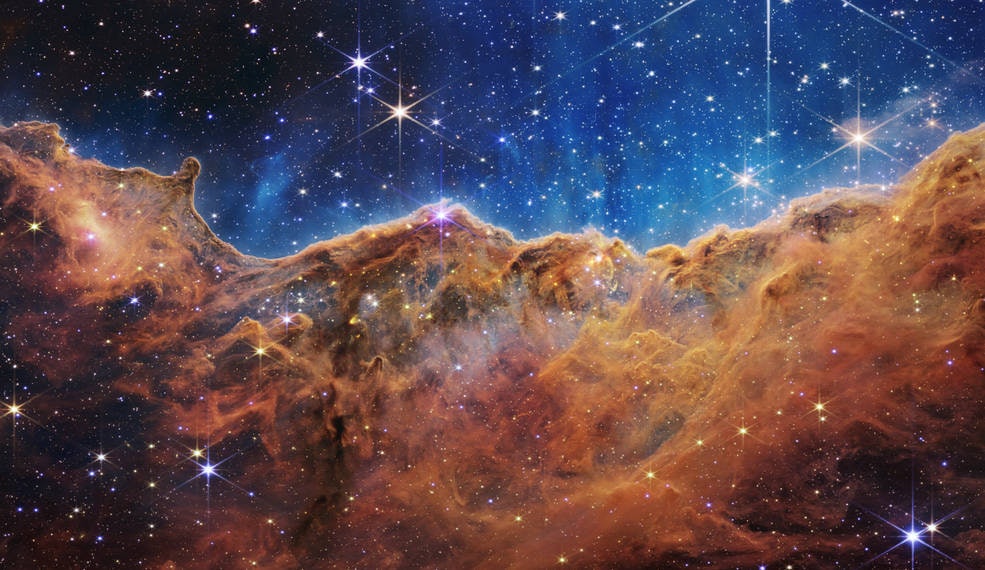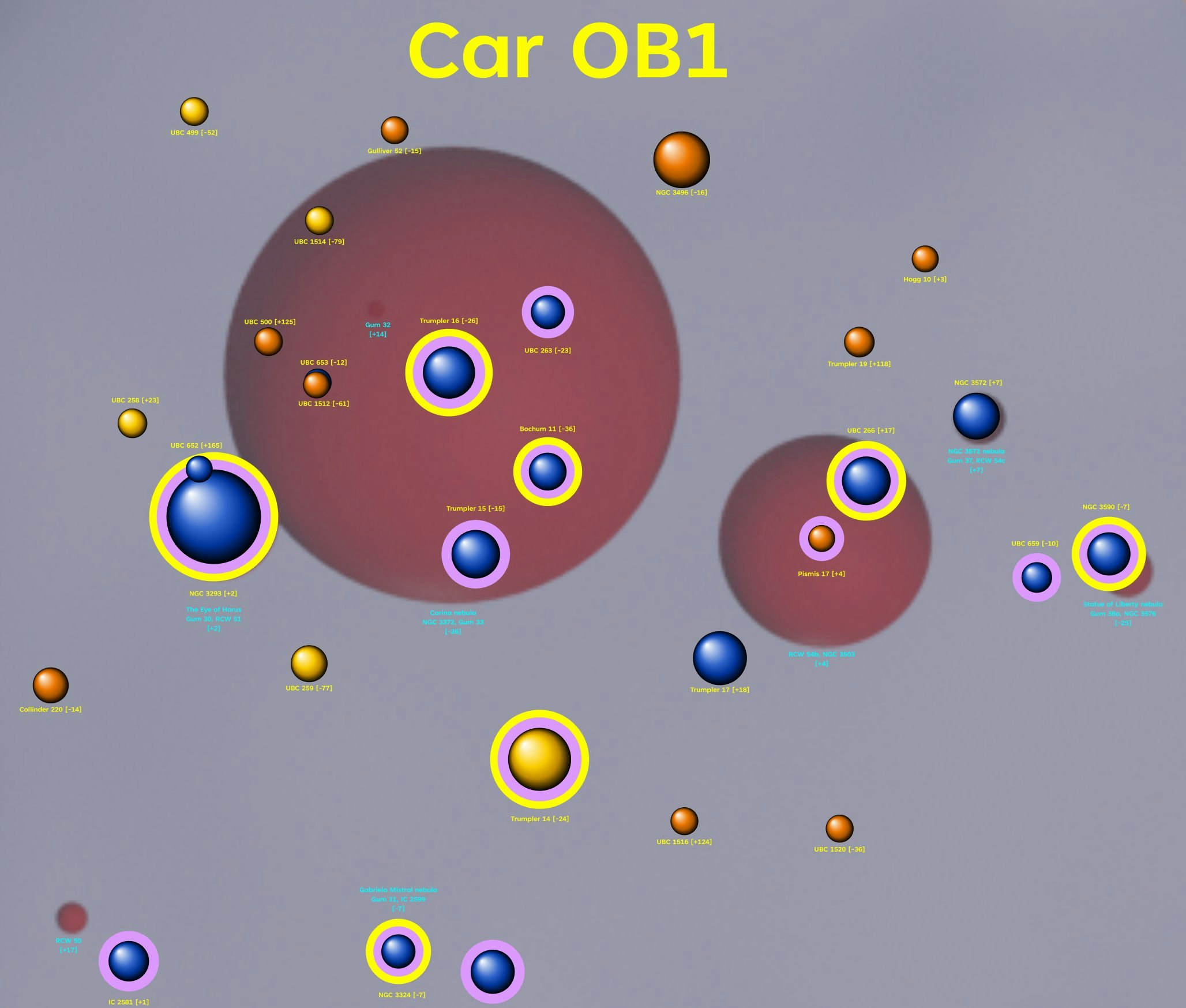
A tweet sparked a debate over one of the James Webb telescope’s first images.
Software developer and amateur astronomer Kevin Jardine, who created the European Space Agency’s Star Density Map and runs the Galaxy Map project, claims that the image of a towering wall of clouds in the Carina Nebula doesn’t actually show the Carina Nebula.
Instead, says Jardine, it’s a smaller nearby nebula called NGC 3324, or sometimes the Gabriela Mistral Nebula. That’s based on Jardine’s examination of the astronomical data underlying the gorgeous images, which was released to the public on Wednesday and included detailed location information for the objects in each image.
Jardine tweeted, “The data table confirms that the Carina image released yesterday was *not* of the Carina Nebula (NGC 3372) but of the ionizing cluster (NGC 3324) of the Gabriela Mistral Nebula (Gum 31 / IC 2599). You can see it at the bottom of this Car OB1 map.”

This is where definitions get slightly, well, nebulous.
For example, the Carina Nebula is so large that it contains a couple of other nebulae within its boundaries, including the Homunculus Nebula (the remains of a star’s explosive death in 1841) and the Keyhole Nebula. Today, the name “Keyhole Nebula” refers to a particular keyhole-shaped structure within the Carina Nebula, but in the late 1800s, the name sometimes also described the whole Carina Nebula, since it contained the Keyhole.
Something similar is behind this week’s Carina controversy. the Gabriela Mistral Nebula is near (or in, depending on who you ask) the northwest corner of the Carina Nebula.
Jardine maintains that they’re not close enough to be interchangeable. “In galactic terms, confusing the two nebulae is a bit like confusing San Francisco and San Jose. Close but not the same,” he tweeted.
Here’s the official word from the Space Telescope Science Institute, which manages the Webb Telescope as well as Hubble: “This was the subject of much discussion as we were writing the caption,” Christine Pulliam at STScI tells Inverse. “We landed on this after consulting with our experts: NGC 3324 is located at the northwest corner of the Carina Nebula (NGC 3372), which resides in the constellation Carina.”
So stellar semantics? Mistaken identity? Maybe it’s another mystery for the James Webb Space Telescope to unlock the answer to







